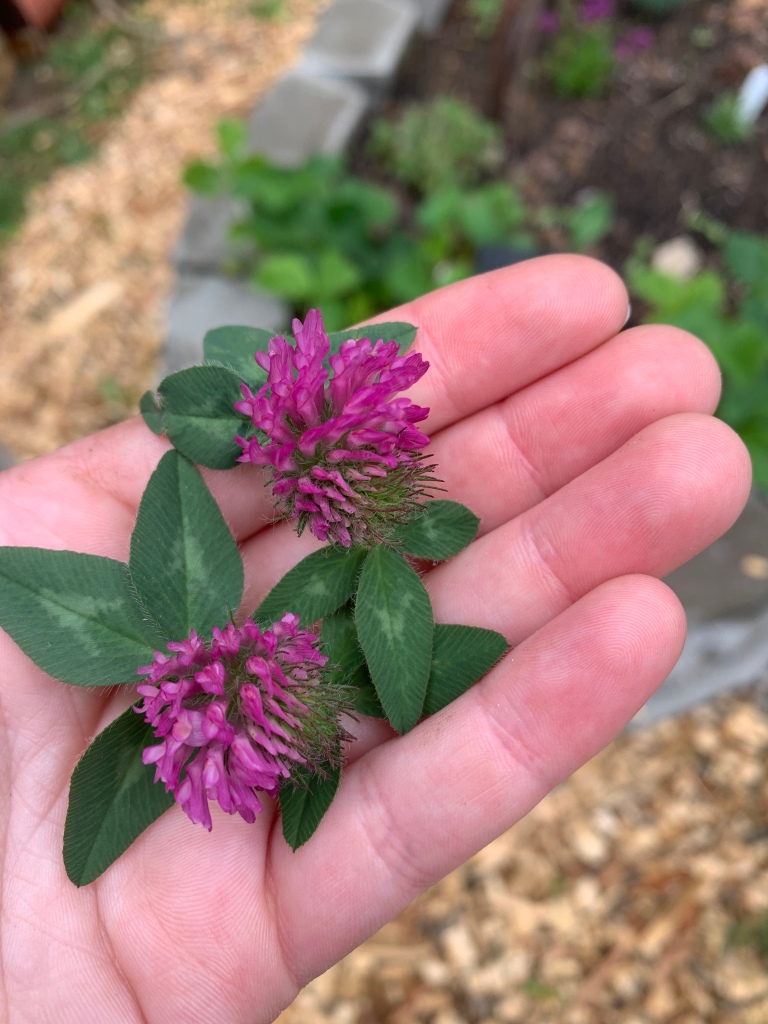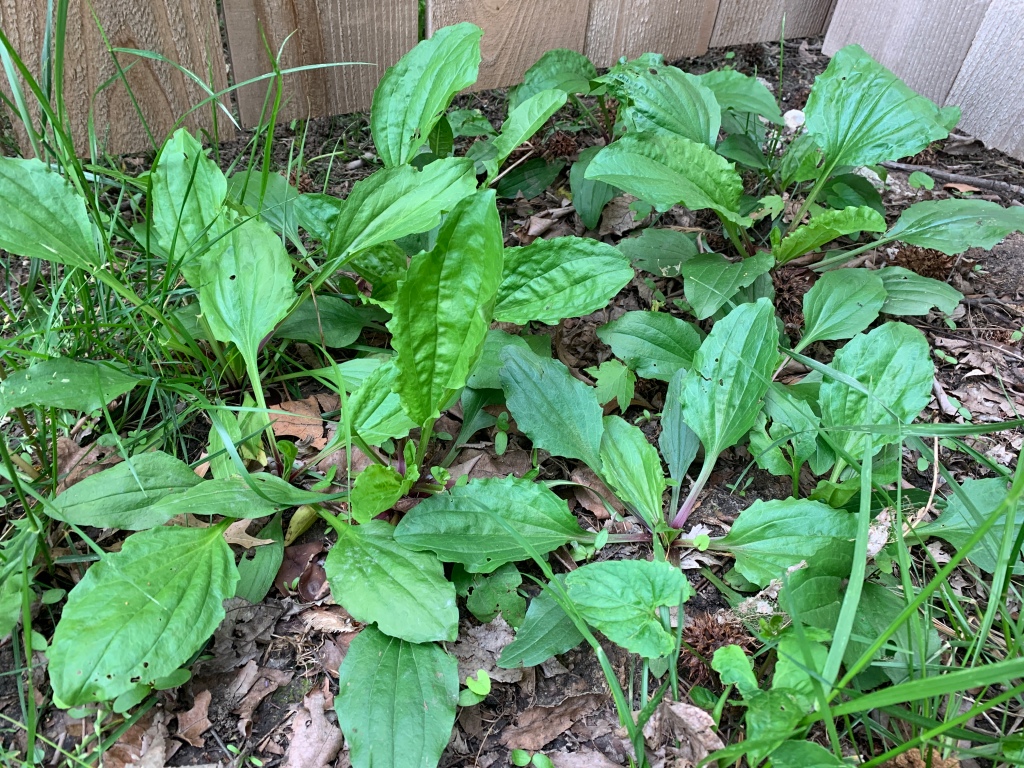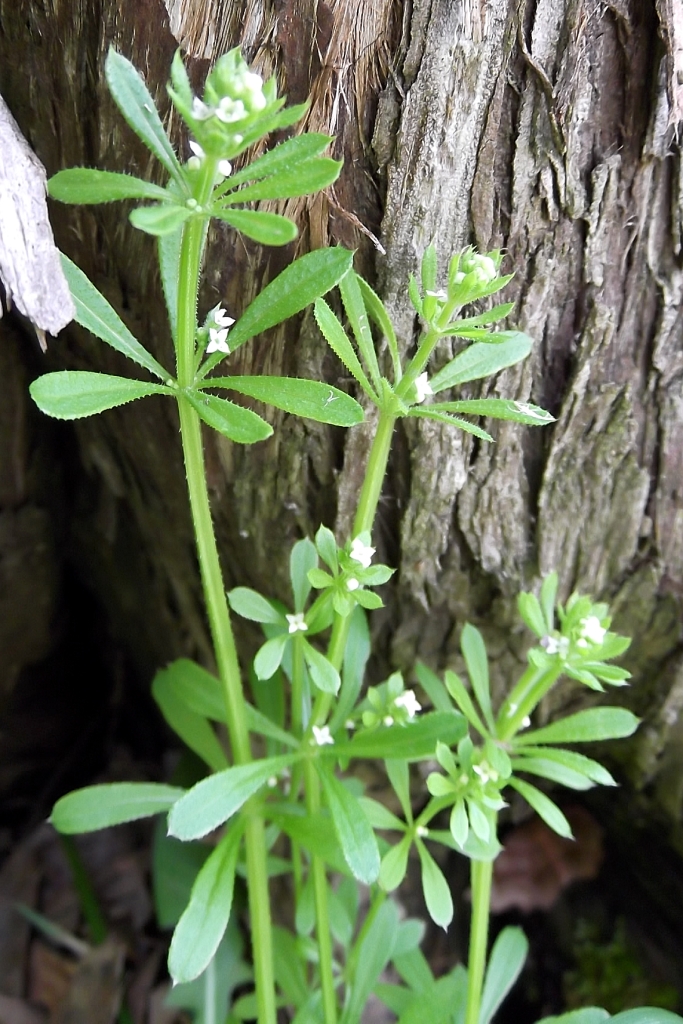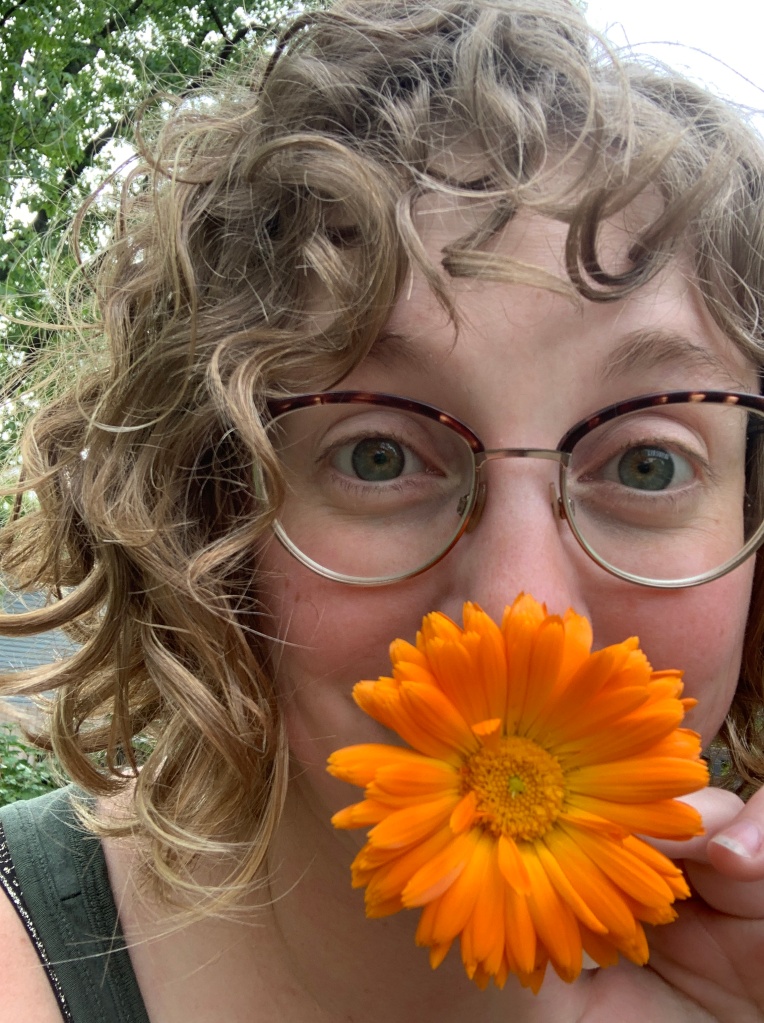Did you know that you likely have a stockpile of medicine in your yard?

No, I didn’t bury ibuprofen and steroids out there. It’s time to push back on the traditional concept of “medicine” as pharmaceuticals and pharmaceuticals alone. Before we go too far, I need to say that Western medicine absolutely has a role in our lives and should be utilized any time you, or a family member, feels uncomfortable with the health situation at hand or is in grave danger. But seeing as how Western medicine tends to treat symptoms of a larger issue in our bodies, we can turn to herbs and food to promote wellness in our bodies to help prevent the symptoms in the first place.
Let’s take heart problems, for example. Years of eating a fatty, inflammatory diet, lack of a exercise regimen, and perhaps even hereditary issues like high blood pressure and diabetes has lead to a heart attack. Western medicine can absolutely patch you up, put in stints, prescribe blood-thinners or anticholeretics, and send you home with instructions to eat better and exercise more. But what they don’t necessarily do is help provide direction for how to heal your body, your arteries, and your heart rather than cope with your heart symptoms by thinning your blood and suppressing bile production in your liver.
Eating the right food and working with an herbalist can help provide the yin to Western medicine yang by addressing the rest of your body while your heart heals. What your doctor could not treat was your weight gain, the inflammation in your body that lead to your organs working harder, your skyrocketing stress from work that overburdened your heart, and probably a lot more that was contributing to the buckling of this particular organ under all the issues that were piled onto your body. Your heart is likely not the only thing that’s broken – it was just the last Jenga piece that caused your system to crash. Your Jenga puzzle was teetering to begin with.

I have loved studying about herbs and herbalism the past several months through some online coursework, and it has really helped me delve into trying to support my body holistically rather than target particular symptoms. For example, I tend to get headaches and neck aches that, I realized, derived from stress or lack of sleep. Once I started focusing on eliminating the stress and supporting my sleep system, the headaches started going away (or at least occurred less frequently or less intensely). This is sometimes the opposite approach of conventional medicine – just think of the commercials: Tennis player pops a few painkillers so they can keep up their game despite serious arthritis and muscle deterioration. Did you dull the pain? Yes. Did you fix the problem, which is inflamed joints and painful muscles? No. (Did you also guarantee that you will have to continue purchasing said pain medications for the rest of your life, or worse, develop addictions to pain relief? YEP.) We’re approaching our bodies with only half the solution – you can treat pain, but you need to heal your body, as well.
And again – we need Western medicine. We need the amazing abilities of our doctors to treat illness, mend our bones, monitor our vitals, vaccinate against deadly disease, and more. But we need to help ourselves with the right herbs and foods so we don’t get so sick and need their help for the processes our bodies can handle on their own if we would give them the chance.
This spring, it has been particularly exciting to start poking around our corner lot and see what kind of herbs are sprouting in the yard on their own. A trip to the neighborhood park yielded even more exciting discoveries. I know a lot of you think that herbalism is expensive and chock full of essential oils, and sure, it certainly can be. (Reishi mushrooms can sell upwards of $25 per POUND and the tincture at $10 per OUNCE. It is glorious, though.) But when there’s so much free stuff just in your backyard, why not start there?
These are some of my new favorites from my yard and the neighborhood. Now, while I have studied herbalism extensively and will soon have my certificate, I am not allowed to prescribe, diagnose, or treat you. I can, however, happily talk to you about suggestions for how these herbs are traditionally used and give you a glimpse into some of the benefits of using them for yourself. (Working with a herbal practitioner is always the safest route for specific conditions, just as working directly with your doctor is just as important.)
Dandelion Root & Leaves

I know you all saw the “tea craze” a few years back – “Drink this tea daily, and you’ll shed 10 pounds of water weight a DAY!” If you truly want to detoxify your body – and when we say detox your body, we are really focusing on kidney & liver detoxification, then dandelion root and/or leaves are wonderful for supporting this.
Will you lose a crazy amount of water weight? Probably not. (And if you did, you’ll gain it right back unless you have seriously altered your diet.) But dandelion root tea can be an excellent way to support a healthful liver and flush the byproducts from your liver and kidneys. Your liver is key to your whole system, because it takes what you consume and breaks it down into monosaccharides, amino acids, and fatty acids & lipids that your body needs for energy, nutrients, and vitality. The more processed foods and alcohol we feed it, the harder it has to work and the more of the toxins are left for your liver to try to expel out through your elimination system. Dandelion root or a combination of root and leaves, often taken as a tea, can help serve as a diuretic that flushes your system and doesn’t strip your body of its potassium in the process, unlike traditional diuretics. (But you should still eat your banana.)
Plantain

This is nature’s bandage. And holy cow, is it everywhere! Plantain loves to grow in damaged, disturbed soils by roads and sidewalks. (If you gather some, herbalism communities suggest you gather fifty-feet from the road to avoid pollution and to know whether the area has been treated for herbicides/pesticides before attempting to use it.)
If you are outside and get a burn, blister, sting, or a scrape, you can grab one of these leaves (wash it first) and wrap it over the wound. To be most effective and, therefore, release plantain’s astringent and cooling actions, chew it up in your mouth and apply to the wound directly (this is called a “spit poultice” – works well in a pinch!). Evan burned his hand on a stripped screw to the point of blistering, and he immediately put plantain on it – after twenty minutes, it was almost numb! The subsequent application of a fresh plantain leaf, aloe, and a pain salve almost completely healed the blister. I’m collecting and drying leaves now so that I can use them in tinctures and dry poultices this fall and winter when the plants die back.
Mullein

Pandemic friends, fear hoarding no more – for the toilet paper plant is here! This often gets mistaken for lamb’s ear, but mullein is much bigger and actually flowers in its second year. It has a very soft leaf, so yes, it makes the short list for a toilet paper substitute. If you can keep it long enough, it can also provide wonderful lung and respiratory support.
Mullein is an example of a plant that can be identified for use according to the Doctrine of Signatures – this was a very old way of trying to identify what part of the body the herb would support by observing the herb. Yarrow leaves, for example, looks like veins and capillaries, and so early herbalists (correctly) theorized that yarrow specifically targets circulatory support.

Mullein is covered in tiny hairs all over the leaves, and these hairs were believed to mimic the cilia of your respiratory tracts. And so it works its wonders as a tincture or in a tea as an expectorant and anti-inflammatory support system for your lungs. If you do try to work with mullein at home in an oral fashion, make sure you fine strain the mixture very carefully, or the tiny hairs will irritate your throat!
Mullein is known as a pioneer plant – it is one of the first plants to grow in an area that has been disturbed by fire, heavy tilling, or some other kind of soil destruction, much like plantain.
Cleavers

I love learning about the different names for plants, because many of them are, as you know, named for their distinct appearance or role. You have probably angrily pulled cleavers from your garden to realize that they cling to your skin, your clothes, and your pets – “sticky willy” or “catchweed” is very accurate, indeed!
I have not yet worked with cleavers directly, but I have some drying in my kitchen as we speak. I was surprised to find it pop up by my fence and happily took advantage of a few pieces once it started flowering.
Cleavers is known to be a wonderful tonic for your lymphatic system. Remember when I mentioned addressing your whole system rather than a symptom? If you are always catching a cold or suffering from frequent infections, having a hard time recovering from illnesses, or suffering from immunity issues, analyzing your immune and lymphatic systems becomes very important. Keeping your immune system in healthy working order helps you possibly not get ill in the first place, or at least be able to fight the illness more easily.
Your lymphatic system, in particular, helps remove waste, dead blood cells, and pathogens from your system (and connects your various lymph nodes, spleen, and T-gland, which can produce cancer-fighting cells, throughout your body – your lymph nodes swelling are often a sign that your body is fighting off something). If your lymphatic system is struggling, it can mean your immunity and health is struggling, too – and suddenly the Jenga pieces are getting yanked out rapidly.

Are you interested in learning more about herbs and herbalism? This book is a great place to start – Rosemary Gladstar is often considered a Mother of Herbalism in the herbal world and has some great literature and recipes to get you started with things in your cupboard now. Or, jump right in with me and take some herbal courses online! It’s never too late to learn more about what’s growing around you – and how you can use it to keep your body whole and thriving. (Jenga pieces not included.)
Be well, friends!



Nature offers you the medicine and life you need to thrive for sure! Dzięki for the read!
LikeLike